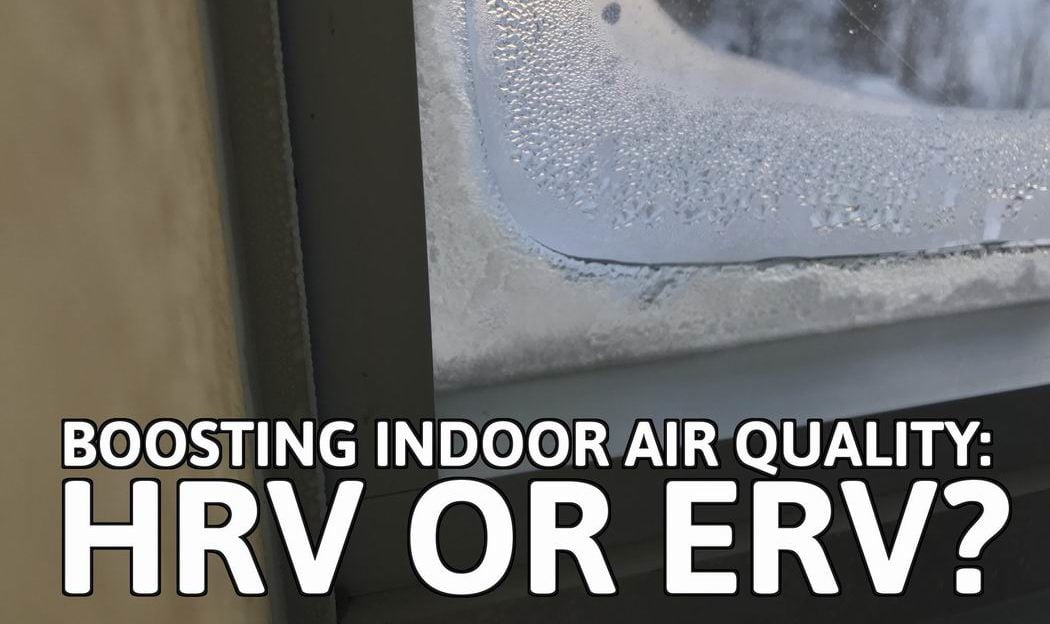When you live in a cold climate, winter can mean living in a home with indoor air quality that would be considered harmful or even illegal in a workplace situation. That’s what happens when you live in a modern home in cold climates and keep the windows closed for half the year to save energy.
Building a tight home is just half the battle. You also need to take steps to replace the natural ventilation that used to happen through cracks, gaps and bad windows in leakier homes. I was reminded of this when a subscriber asked me:
“What’s best for ventilating a tight home that develops window condensation, an HRV or an ERV?”
Humidity is the key
My short answer is that a heat recovery ventilator (HRV) is the best given cold winter temperatures for homes that develop excessive window condensation. Why? Because an HRV has much more power to reduce indoor humidity levels in your home.
An HRV brings in a stream of fresh outdoor air, it exhausts stale indoor air outdoors, and it preserves most of the energy invested in heating your home. Condensation that would normally happen on your windows now happens inside the HRV.
In cold climates like ours, lowering humidity is usually what’s needed most urgently, as evidenced by windows wet with condensation and ice on them during cold weather. If you want to dry out your windows, an HRV is definitely the way to go.
An energy recovery ventilator (ERV), by contrast, preserves moisture levels within your house while introducing fresh air and recovers energy invested in either heating or cooling. An ERV will freshen the air in your home, but it won’t dry your wet windows very much.
Summer vs. winter
So, which should you choose? Ideally, an HRV is superior for use during winter (in homes with wet winter windows), but an ERV would be better during the summer, when excess humidity typically exists outdoors.
But given the fact that most of us only want to install one system, I’d definitely go with an HRV for a typical Canadian home. (An ERV makes more sense when you live in a climate where temperatures don’t drop much below freezing.)
This video I did on indoor air quality can help you judge for yourself whether what you’re breathing is good for you. You’ll also learn what you can do to make things better:

